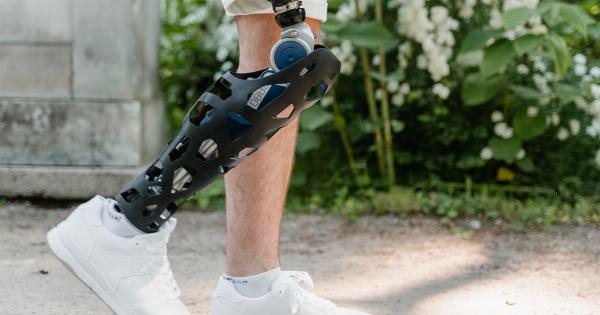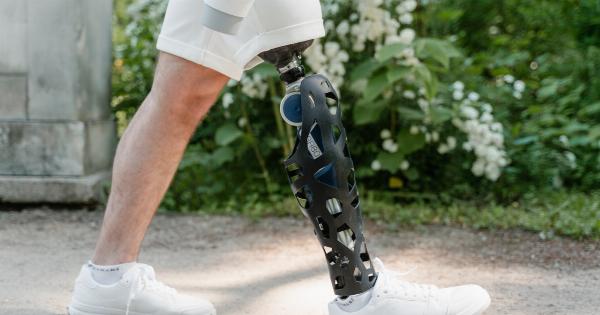Knee osteoarthritis is a common degenerative joint condition that affects millions of people worldwide. It occurs when the cartilage that cushions the knee joints wears away, leading to pain, stiffness, and reduced range of motion.
While there is no cure for knee osteoarthritis, there are several easy tips that can help manage the symptoms and improve the quality of life for individuals living with this condition. In this article, we will explore ten effective ways to combat knee osteoarthritis and promote better joint health.
1. Maintain a Healthy Weight
One of the most effective ways to reduce stress on the knee joints is by maintaining a healthy weight. Excess weight puts additional pressure on the knees, accelerating the degeneration of cartilage and worsening osteoarthritis symptoms.
By achieving and maintaining a healthy weight through a balanced diet and regular exercise, individuals can significantly reduce the burden on their knee joints and alleviate pain and discomfort associated with knee osteoarthritis.
2. Engage in Low-Impact Exercises
Regular exercise is crucial for maintaining joint health, but individuals with knee osteoarthritis should focus on low-impact activities that minimize stress on the knees.
Swimming, cycling, and walking are excellent options for improving cardiovascular fitness and strengthening the muscles surrounding the knee joints without exacerbating the symptoms. It is important to consult with a healthcare professional or physical therapist to develop an exercise plan that suits individual needs and abilities.
3. Use Heat and Cold Therapy
Applying heat or cold to the affected knee joints can provide temporary pain relief and reduce inflammation.
Cold therapy, such as using ice packs or cold compresses, helps numb the area and decrease swelling, while heat therapy, such as warm towels or heating pads, relaxes the muscles and promotes blood circulation. Alternate between heat and cold therapy as needed to alleviate pain and improve joint mobility.
4. Try Physical Therapy
Physical therapy plays a significant role in managing knee osteoarthritis. A physical therapist can design exercise programs tailored to an individual’s specific needs, including stretching, strengthening, and range-of-motion exercises.
Physical therapy can improve joint stability, increase flexibility, and reduce pain and stiffness in the knee joints. Regular sessions with a physical therapist can be highly beneficial in managing knee osteoarthritis symptoms.
5. Wear Supportive Footwear
Choosing the right footwear is essential for individuals with knee osteoarthritis. Shoes with good cushioning and support help absorb shock and minimize stress on the knees while walking or engaging in physical activities.
Avoid high heels and opt for comfortable, supportive shoes that provide proper arch support. Orthotic shoe inserts and custom-made orthopedic shoes can also be beneficial in providing additional support and reducing knee pain.
6. Use Assistive Devices
Assistive devices can help reduce pressure on the knees and improve mobility for individuals with knee osteoarthritis.
Walking aids, such as canes or crutches, provide added support and stability while walking, especially during flare-ups or episodes of severe pain. Using knee braces or sleeves can also provide compression and stability to the knee joint, helping reduce pain and inflammation.
Consult with a healthcare professional to determine the most appropriate assistive devices for managing knee osteoarthritis.
7. Incorporate Anti-Inflammatory Foods
Diet plays a crucial role in managing inflammation and promoting overall joint health. Including anti-inflammatory foods in one’s diet can help alleviate knee osteoarthritis symptoms.
Foods rich in omega-3 fatty acids, such as fatty fish (salmon, mackerel), walnuts, and chia seeds, have excellent anti-inflammatory properties. Incorporating fruits and vegetables, especially those high in antioxidants, can also help reduce inflammation. Avoiding processed foods, sugary drinks, and excessive alcohol consumption is also recommended to minimize inflammation in the body.
8. Consider Acupuncture
Acupuncture, an alternative therapy originating from traditional Chinese medicine, has shown promising results in managing knee osteoarthritis pain.
Acupuncture involves the insertion of thin needles into specific points on the body, stimulating the release of endorphins and activating the body’s natural pain-relieving mechanisms. Many individuals with knee osteoarthritis have reported reduced pain and improved knee function after undergoing acupuncture sessions. However, it is essential to consult with a qualified and licensed acupuncturist before considering this treatment.
9. Take Supplements for Joint Health
Certain supplements can support joint health and potentially alleviate knee osteoarthritis symptoms. Glucosamine and chondroitin sulfate are commonly used supplements that help maintain cartilage integrity and reduce joint pain.
Turmeric, a natural spice with anti-inflammatory properties, can also be beneficial in managing knee osteoarthritis. However, it is essential to consult with a healthcare professional before starting any new supplements, as they may interact with existing medications or have potential side effects.
10. Practice Relaxation Techniques
Stress can worsen knee osteoarthritis symptoms and increase pain sensitivity. Incorporating relaxation techniques such as deep breathing exercises, meditation, or yoga can help manage stress levels and promote better overall well-being.
These practices can also help improve sleep quality, which is crucial for individuals with knee osteoarthritis, as inadequate sleep can amplify pain perception. Find relaxation techniques that work best and incorporate them into daily routines to reduce stress and enhance the management of knee osteoarthritis.


















